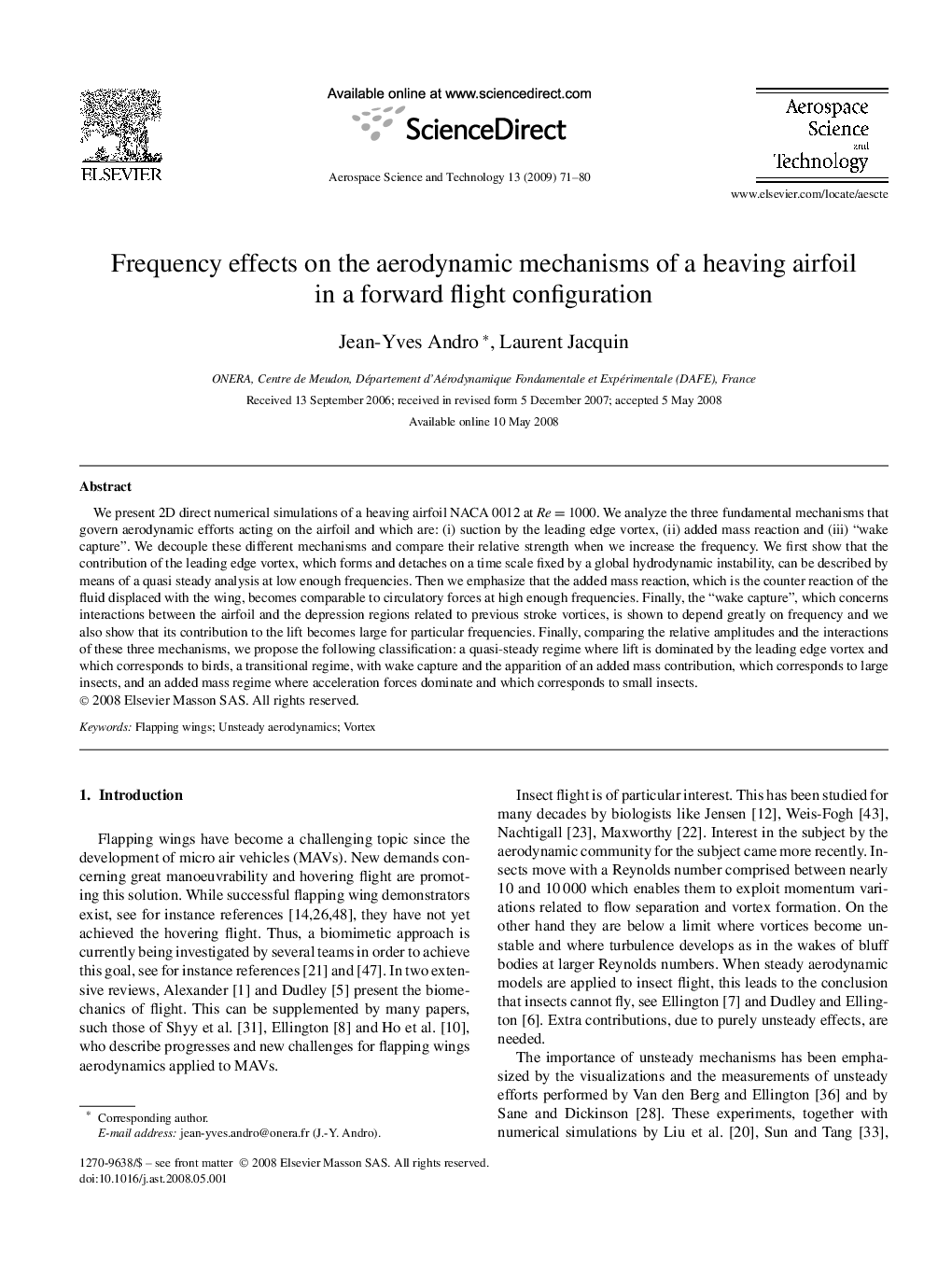| کد مقاله | کد نشریه | سال انتشار | مقاله انگلیسی | نسخه تمام متن |
|---|---|---|---|---|
| 1718603 | 1013854 | 2009 | 10 صفحه PDF | دانلود رایگان |

We present 2D direct numerical simulations of a heaving airfoil NACA 0012 at Re=1000. We analyze the three fundamental mechanisms that govern aerodynamic efforts acting on the airfoil and which are: (i) suction by the leading edge vortex, (ii) added mass reaction and (iii) “wake capture”. We decouple these different mechanisms and compare their relative strength when we increase the frequency. We first show that the contribution of the leading edge vortex, which forms and detaches on a time scale fixed by a global hydrodynamic instability, can be described by means of a quasi steady analysis at low enough frequencies. Then we emphasize that the added mass reaction, which is the counter reaction of the fluid displaced with the wing, becomes comparable to circulatory forces at high enough frequencies. Finally, the “wake capture”, which concerns interactions between the airfoil and the depression regions related to previous stroke vortices, is shown to depend greatly on frequency and we also show that its contribution to the lift becomes large for particular frequencies. Finally, comparing the relative amplitudes and the interactions of these three mechanisms, we propose the following classification: a quasi-steady regime where lift is dominated by the leading edge vortex and which corresponds to birds, a transitional regime, with wake capture and the apparition of an added mass contribution, which corresponds to large insects, and an added mass regime where acceleration forces dominate and which corresponds to small insects.
Journal: Aerospace Science and Technology - Volume 13, Issue 1, January 2009, Pages 71-80